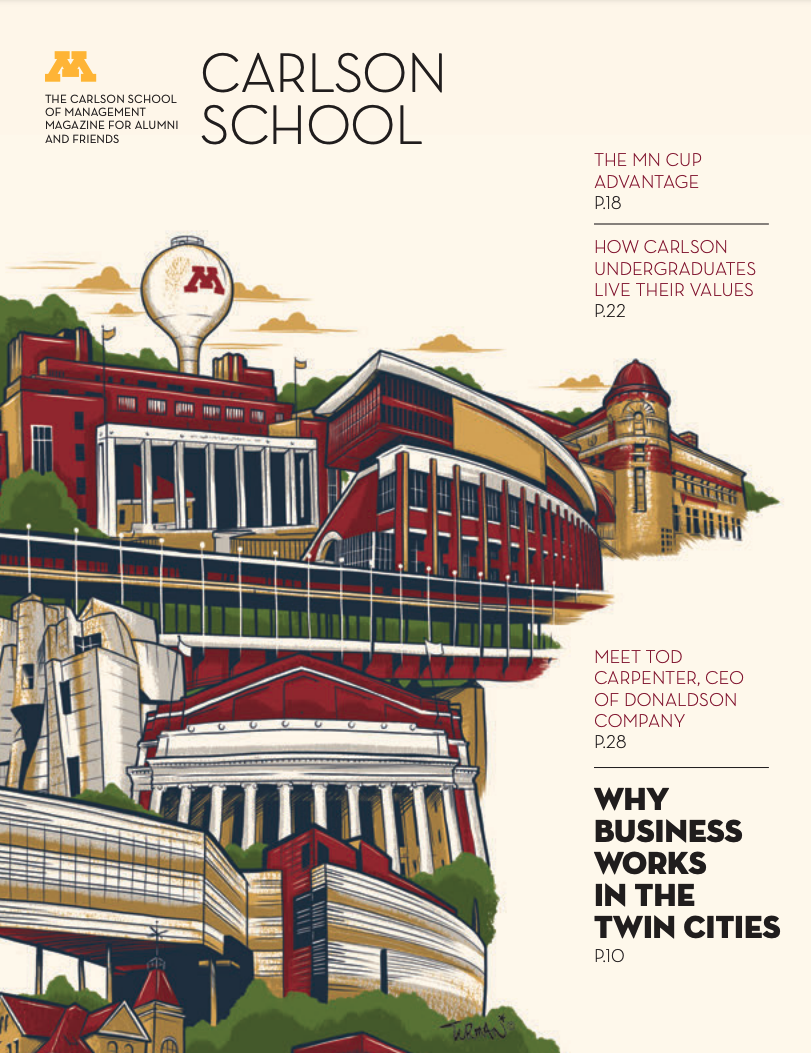
Soumya Sen's Research Works Toward Closing the Digital Divide
Friday, April 5, 2019
In 2016, experts at the World Economic Forum declared our global economy is experiencing a fourth industrial revolution.
Technology is transforming every area of our lives, from communication to commerce, from healthcare to transportation. But this culture-shifting transformation is only happening for those with broadband internet.
“While access may be easy for the urban and wealthy, many rural communities and socially disadvantaged groups in cities do not have access to the internet at reasonable prices,” says Assistant Professor Soumya Sen, Lawrence Fellow and director of research at the Management and Information Systems Research Center. “This is the ‘digital divide.’”
Throughout his academic career, Sen researched several data pricing solutions that offer the opportunity to bridge this digital divide and help Internet Service Providers (ISPs) extend their services to remote customers.
“Going forward, internet access is critical to training people in information technology and creating employment opportunities.”
Demand Growing Faster Than Infrastructure
According to the 2018 FCC Broadband Report, approximately 14 million rural Americans and 1.2 million Americans living on tribal lands still lack mobile LTE broadband at 10 Mbps/3 Mbps. While more than 90 percent of residents in urban areas have mobile LTE, only 70 percent of rural U.S. citizens and 64 percent of U.S. tribal populations have access.
“ISPs are concerned the demand for broadband data, particularly mobile traffic, is growing so fast they can’t sustain it on the limited spectrum available,” Sen says. “We refer to this problem as the ‘spectrum crunch.’”
While the spectrum crunch is partly caused by exponentially increasing data demands, like streaming video and intricate video games, part of the problem is infrastructure—the data delivery capacity of the existing satellites, towers, fiber optics lines, and broadband cables.
“One constraint is the inability or unwillingness of ISPs to expand into rural areas,” Sen says. “These regions are often sparsely populated, so the cost of connecting the ‘last mile’ to individual homes is much higher, and providers believe the investment required to connect residents won’t be recovered.”
While organizations pilot innovative infrastructure solutions such as backhauling data from satellites and using drones or balloons to extend signals, Sen has worked to optimize the potential of our existing tools.
Finding Bandwidth Between the Peaks
Sen has partnered with ISPs in the United States, India, and Vietnam to research, test, and refine strategies that optimize the bandwidth of existing infrastructure, and even offer companies the opportunity to generate the revenue needed to invest in costly infrastructure.
Many smaller “middle mile” ISPs lease infrastructure from larger providers, and make deals based on peak demand, but they only earn based on average demand. This drives up the costs for consumers in rural areas.
“In rural Alaska, we collaborated with a cable that comes to Anchorage from Seattle, owned by a company that charges on peak demand,” Sen says. “A lot of people use the network at the same time, then there is a big valley. But they pay for peak 24/7. So we asked, ‘How can we flatten demand?’ Reduce the peak and fill up the valley. If you could shift traffic from the peak to the valley, you could save money for consumers and offer more bandwidth.”
Based on analysis of the data from this ISP and other partnerships around the world, Sen and his co-authors identified three win-win strategies for ISPs and their customers:
1. Dynamic pricing for mobile networks:
Sen partnered with AT&T to test an incentive-based mobile data plan— dynamic day-ahead time-dependent pricing, providing variable pricing announced a day in advance. The prices provided users with incentives to shift some traffic to off-peak hours.
“While these incentives motivated some users to shift their behavior to save money, the rise of machine-to-machine traffic and Internet of Things (IoT) provides a new opportunity to adjust traffic based on network bandwidth,” Sen says.
2. Empowering users to offload data requests to Wi-Fi:
Sen and his team developed a system called AMUSE (adaptive bandwidth management through user empowerment), which runs on a mobile user’s device and intelligently decides which applications should consume bandwidth when the user is not using Wi-Fi. The predictive algorithm learns from the user’s data usage and travel patterns to predict future needs and Wi-Fi availability.
“If a person is about to stream a movie, AMUSE knows they will be at Wi-Fi in 10 minutes,” Sen says. “If I know this, then I might wait for 10 minutes until I start watching. Bringing that intelligence to the user, informing them how much bandwidth, or money is left in their data plan … you’re helping them decide whether to wait for a download.”
3. Ad-sponsored data plans:
What if you could get free data if you watched an ad? In a study, funded by the University of Minnesota and an Adobe Research grant, Sen architected an ad-sponsored platform and conducted randomized field experiments to evaluate the relationship between monetary incentives and a user’s response to these adverts to help create viable ad-sponsored data plans.
“If you watch ads, you get incentives,” Sen says. “You get a bigger incentive if you share the ad. We wanted to better understand what price points or incentives they should offer to get users on board.”
A More Accessible Future
In 2014, Sen and other faculty members at the Carlson School hosted an industry forum with several Minnesota-based ISPs to establish an ongoing relationship with the industry and form partnerships that would help them overcome last mile challenges. The work is ongoing, and important to Sen.
“Broadband is now essential to economic life,” says Sen. “Going forward, internet access is critical to training people in information technology and creating employment opportunities in economically depressed areas, such as the Midwestern U.S., which have declined in manufacturing and retail industries due to automation and internet commerce."
